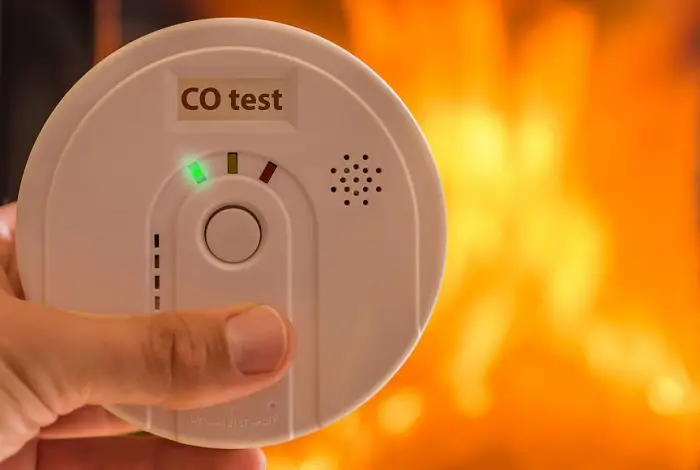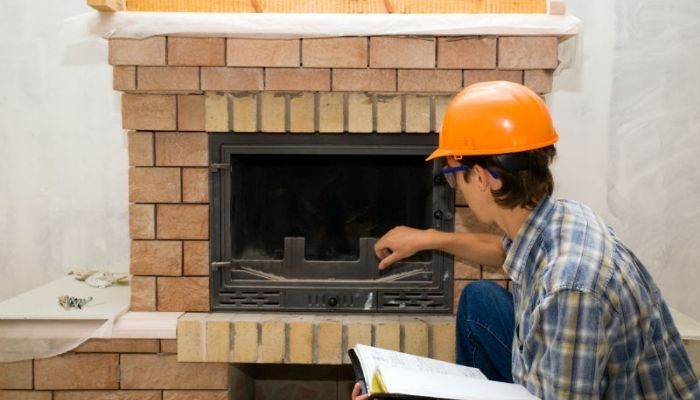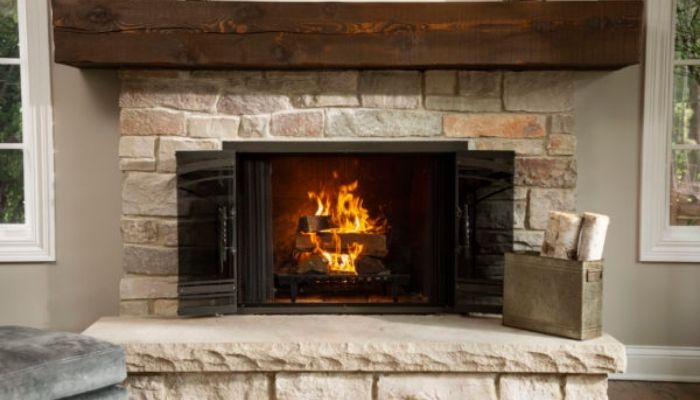Yes, gas fireplaces are one of the culprits that cause carbon monoxide poisoning. However, what is carbon monoxide? Carbon monoxide is a by-product of burning fossil fuels. When a gas fireplace is not properly maintained, incomplete combustion may occur. This will produce carbon monoxide which is a toxic gas to those inside the rooms.
How Do I Know If My Fireplace Has Carbon Monoxide?
Carbon monoxide is a colorless and odorless gas. This may make it hard to notice a leak in your home. The effects could be detrimental to you and your family’s health.
The following signs may help you detect the presence of carbon monoxide in your house;
- Spotting black sooty marks on the glass door of gas fireplaces
- Smoke building up in rooms with the fireplaces
- Heavy condensation on window panes that have a gas fireplace installed close to
- Sooty or brown stains on boilers
- Pilot lights in your fireplace blowing out frequently
- Solid fuels burning slower than normal
- If the home occupants have the following symptoms; headache, chest pains, breathlessness, fits, nausea, loss of consciousness
- The symptoms disappear after getting out of the house
- Pets becoming ill
- The symptoms worsening when light the gas fireplace
Do You Need a Carbon Monoxide Detector If You Have a Gas Fireplace?
Investing in a carbon monoxide detector will go a long way in keeping your home safe. The detector will not only alert you in case of a carbon monoxide detector but also when there is a smoke buildup. This will prevent fires and the destruction of your home.
A beeping carbon monoxide alarm should never be ignored. This is according to the U.S Consumer Product Safety Commission (CPSC). Even if the alarm is indicating a low battery, it should be checked. The purpose of this is to prevent malfunctioning.
Here are some tips on how to read the beeps from your carbon monoxide detector.
- 4 beeps followed by a pause indicate that carbon monoxide is present. You should then evacuate the house and seek professional help.
- 1 beep each minute indicate the batteries are out and need replacement
- 5 beeps each minute indicate that the detector is out and needs replacing
Servicing of smoke and carbon monoxide detectors should be done frequently.
Nowadays, professionals who service lighting also service the alarms. There has also been an increase in smart homes. You can check on your carbon monoxide detector by just using a mobile phone app.
Are Fumes From Gas Fireplaces Harmful?
Gas fireplaces are considered safer than traditional wood-burning fireplaces. However, they can also produce toxic fumes that are harmful to our health. The air quality inside the house is also destroyed.
Carbon monoxide is probably the most toxic gas that may be produced by a gas fireplace. It is a result of the incomplete combustion of several fuels including natural gas.
Mild carbon monoxide presence may cause dizziness, fatigue, and nausea. High levels of carbon monoxide can cause vomiting, mental confusion, and eventual death.
Nitrogen dioxide is a brown and odorous gas that is produced by a gas fireplace. The gas causes irritation of the throat, nose, and eyes. It is a product of burning fuels. In high concentrations, the gas can cause shortness in breath.
Lung problems and chronic bronchitis can occur when there is prolonged exposure to nitrogen dioxide.
The solution includes installing carbon monoxide detectors in every home. You will be able to deal with such gases and their effects early enough.
Servicing the vents and flues frequently can help improve indoor air quality.
Conclusion: Do you need ventilation for a gas fireplace?
Carbon monoxide is often referred to as the “silent killer”. This is because it is colorless and odorless. You have to be vigilant to avoid carbon monoxide poisoning. Evacuate your family immediately you recognize the presence of carbon monoxide in the house. Prolonged exposure to these deadly gases leads to long-term health complications. Gas fireplaces should be inspected at least once every year to ensure proper functioning. Also, invest in a smoke and carbon monoxide detector.


